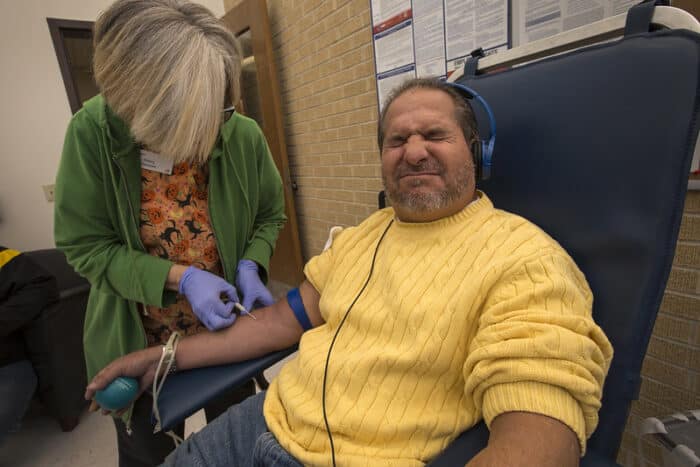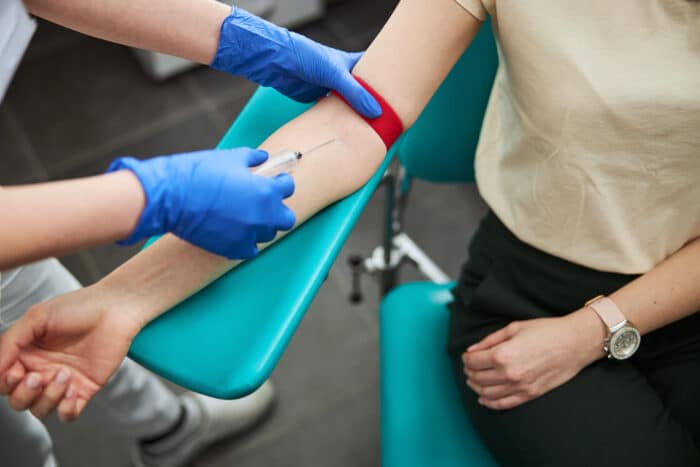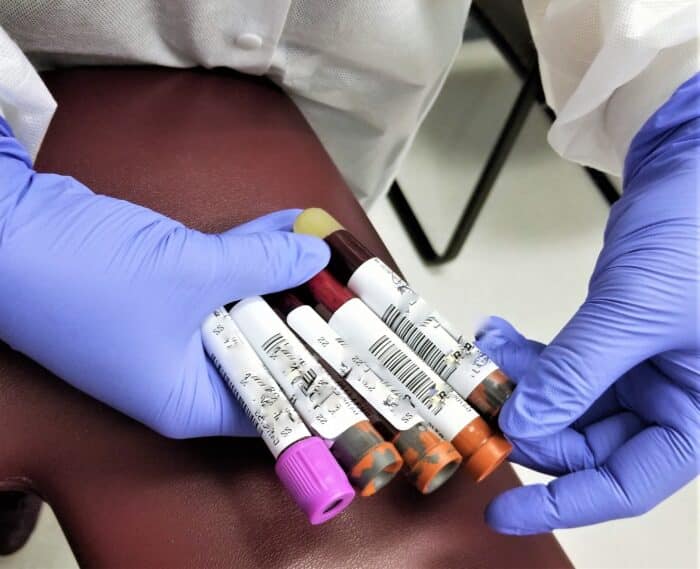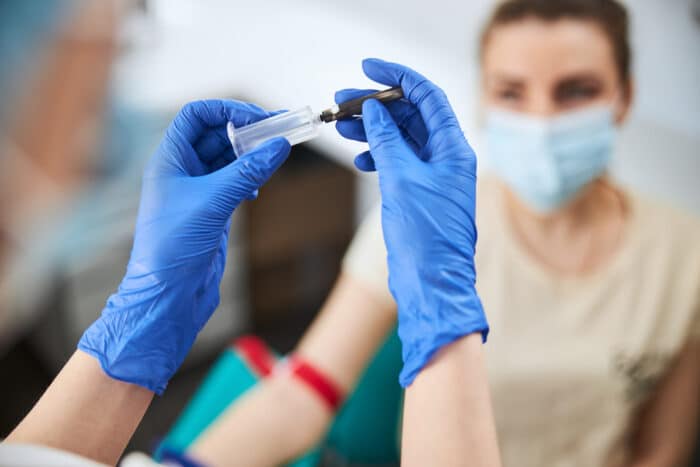Are you interested in entering the world of healthcare, but don’t know where and how to start?
Are you also someone who is passionate about helping people and interacting with them on a daily basis?
If your answer is a yes to all of the above questions, then entering the industry of Phlebotomy might be a good career choice for you!
The best part about pursuing this career is that you do not even need a degree to become one. That’s right!
All you need is your high school diploma or a GED.
But, you must be wondering, what is a Phlebotomist?
And what do they do?
We’re here to answer all such questions and more so that you can decide if this rewarding career is a good fit for you.
We will also uncover the salary figures, the top industries, types, and how to become a phlebotomist in this article.
Let’s dive in!
What is a Phlebotomist?
This might be the first question that popped into your mind: how do you exactly define a phlebotomist? What is phlebotomy?
Phlebotomy can be best described as a procedure wherein a puncture is made in one of your veins to draw blood, usually in your arm.
This process is also called venipuncture and is an essential diagnostic tool for many illnesses.
A Phlebotomist is a medical professional who is trained in performing blood draws.
They take that blood to a medical lab where it gets analyzed. Sometimes, phlebotomists also gather blood for blood banks or to prep it for transfusions.
Now, when it comes to how they collect that blood, phlebotomy technicians usually use venipuncture, which means drawing blood from a vein.
But in some cases, they might do finger pricks or even heel pricks for kids, especially if they work in pediatric medicine.
What Do Phlebotomists Do?
Now, you might be wondering what the main responsibilities of a phlebotomist are.
One of the key duties of a phlebotomist is to draw blood for analysis or donation,
But, apart from that, other duties of a phlebotomist involve:
- Preparing patients for blood collection procedures.
- Comforting and reassuring nervous patients, guiding them through the process.
- Verifying patient identities to ensure proper labeling of blood samples.
- Keeping track of and organizing patient blood samples.
- Maintaining and managing blood collection equipment.
- Collaborating with doctors and other healthcare professionals as part of the team.
- Ensuring a clean and sterile environment during blood collection.
- Educating patients on post-blood collection care and any necessary precautions.
Also see: Phlebotomist Duties

Do You Want To Become a Phlebotomist? Check Out Free Phlebotomist Masterclass!
In our masterclass you learn:
- How to be a Phlebotomist faster…in just 2 months!
- Avoid student debt & driving to classes
- #1 thing employers want from Phlebotomists
- How to stand-apart & get a university certificate for a strong resume
Phlebotomist Salary: How Much Do They Make?
If you’ve made it this far, you might be wondering how much a phlebotomist makes per hour or per year.
Let’s take a look.
According to the U.S. Bureau of Labor Statistics, the average annual mean salary of phlebotomists is $37,380, or $18 per hour.
It is important to note, however, that these salary figures are dependent on a variety of influencing factors,
Such as experience, type of facility, and job location, among others.
See more on: Phlebotomist Salary
Where Do Phlebotomists Work?
You will find phlebotomists working in healthcare facilities where blood testing or blood collection is an essential aspect.
But, what are the top employment industries for phlebotomists?
Here is a list of the top employing industries for phlebotomists, according to the BLS:
- Medical and Diagnostic Laboratories
- General Surgical and Medical Hospitals
- Ambulatory Healthcare Services
- Physician’s offices
- Employment Services
Apart from these, you can also find phlebotomists working in facilities such as blood banks, research institutions, and military or government facilities.
See: Phlebotomist Degree
How to Become a Phlebotomist?
Now, after you have read everything about phlebotomists, you must be wondering what is the process to become one.
We’re here to guide you through the process.
Here is a step-by-step guide on how to become a phlebotomist:
Complete your high school diploma or a GED:
This is usually the only minimum requirement that is needed before you can start with the process of becoming a phlebotomist, to earn your high school diploma or a GED.
Choose and Enroll in a Phlebotomy Training Program:
The next step is to choose the right phlebotomy training program for you and start your training.
Since phlebotomists have to deal with drawing blood from veins, it is important to learn the basics of phlebotomy before you can start drawing blood from patients.
During the program, you will get to learn about anatomy, medical terminology, blood collection techniques, safety procedures, and handling of specimens.
Gain Experience Through an Internship/Externship:
After you complete your training, it is important to gain some practical experience in a real-life setting.
Get Certified as a Phlebotomist:
Even though certification is not necessary in most states, it is often preferred by potential employers and enhances your job prospects.
Apart from that, getting certified as a phlebotomist also implies that you can handle blood draws efficiently and with proper protocol, which can be advantageous when looking for jobs.
Read: Phlebotomy Certification
Apply for Jobs:
After you earn your certification, you can go ahead and apply for jobs as a certified phlebotomist.
Conclusion
Phlebotomists are considered an essential part of a healthcare team, mainly because they help in the evaluation of a patient’s health.
This article gave an overview of what exactly a phlebotomist is, what they do, how much they earn, and how you can become one.
Learn more about PREPPY’S Online Phlebotomy Training Program here>
Related Resources:
- Online Phlebotomist Classes
- Traveling Phlebotomist
- How Long Does it Take to Become a Phlebotomist
- Phlebotomist Requirements
- Phlebotomist Skills
- Day in the Life of a Phlebotomist
- Ultimate Phlebotomist Resume Guide – Phlebotomy Job
- Phlebotomist Job Description
- Can A Phlebotomist Start IVs?
- What is the Difference Between a Licensed Phlebotomist and Certified Phlebotomist?
- Which Two Skills are Important for a Phlebotomist?
- What Do You Need To Be a Phlebotomist?
- Pros and Cons of Being a Phlebotomist
- Phlebotomy Externship
- Mobile Phlebotomist
- How Long Does it Take to Get a Phlebotomy Certification?
- What are the Different Types of Phlebotomy Certifications?
- How Long is a Phlebotomy Course?
- Phlebotomist vs CNA
- Is a Phlebotomist a Nurse?
- Therapeutic Phlebotomy
- Phlebotomist Training
- Phlebotomist Education
- Cardio-Phlebotomy Technician
- Online Phlebotomy Classes
- Order of Draw Phlebotomy
- Phlebotomy Internship
- Phlebotomy Interview Questions
- 4-Week Phlebotomy Classes Online
- Venipuncture vs. Phlebotomy: Differences
Related Articles
-
How to Be Successful in College in 2022 – 7 Simple Tips to Succeed
-
How Do Scholarships Work? Read This First…Truth is Shocking
-
7 Best College Majors 2024: What Should I Major In?
-
How to Choose a College – 10 Things You Must Consider in 2024
-
Why Go to College? Top 13 Benefits for Adult Students in 2022
-
Top 5 Best Alternatives to Community College for 2024









